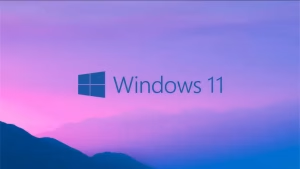Understanding How Does Eprescribing Work in Modern Healthcare Systems

Introduction to E-Prescribing
E-prescribing, or electronic prescribing, has revolutionized the way healthcare providers manage prescriptions. This integral component of modern healthcare technology not only enhances accuracy and efficiency but also aims to streamline the medication management process. In today’s digital age, understanding how does eprescribing work is crucial for both healthcare professionals and patients alike. Let’s dive into the foundational aspects of e-prescribing, exploring its definition, evolutionary journey, and the multitude of benefits it presents.
What is E-Prescribing?
E-prescribing refers to the electronic creation, transmission, and management of prescriptions through digital systems rather than traditional paper methods. By automating the prescription process, e-prescribing facilitates direct communication between healthcare providers and pharmacies, significantly reducing potential errors stemming from illegibility, miscommunication, or human oversight. E-prescribing systems are typically integrated with Electronic Health Records (EHR) or can exist as standalone applications, ensuring that healthcare providers have immediate access to crucial patient information at the point of care.
The Evolution of Prescription Practices
The journey of prescription practices began with handwritten notes that were often limited by clarity and accessibility. As technology advanced, the introduction of fax machines allowed prescriptions to be transmitted more efficiently. However, this method retained many of the drawbacks of written prescriptions, including transmission failures and potential security breaches. E-prescribing emerged as the next logical step in this evolution, marrying healthcare advancement with technological capability. Today, the adoption of e-prescribing continues to grow, driven by the need for improved patient outcomes and the reduction of healthcare costs.
Benefits of E-Prescribing
Adopting e-prescribing systems brings a plethora of benefits that enhance the quality of care provided to patients:
- Improved Accuracy: E-prescriptions minimize medication errors, ensuring that prescriptions are clearly written, correctly interpreted, and devoid of ambiguities associated with handwritten notes.
- Increased Efficiency: The process of issuing prescriptions is streamlined; healthcare providers can send prescriptions directly to the pharmacy from their EHR systems, saving time for both providers and patients.
- Enhanced Safety: E-prescribing systems often include built-in alerts for drug interactions, allergies, and contraindications, thereby protecting patients from adverse reactions.
- Cost Reduction: By eliminating paper and reducing errors, e-prescribing can decrease the associated costs of prescriptions, benefiting both healthcare providers and patients.
- Convenience: Patients can receive their prescriptions electronically, which expedites the medication filling process and allows them to avoid potential waiting times at the pharmacy.
How Does E-Prescribing Work? Step-by-Step Process
Understanding how e-prescribing works is vital for healthcare providers who want to implement this technology effectively. The process consists of several key steps, each ensuring that prescriptions are handled accurately and securely.
Initiating a Prescription
The e-prescribing process begins when a healthcare provider evaluates a patient’s medical history and determines the need for medication. Using an EHR system, the provider selects the medication, specifies dosage instructions, and may also input additional instructions for the pharmacy. The system then generates an electronic prescription that includes all necessary information, thereby ensuring clarity and precision.
Sending the Prescription to the Pharmacy
Once the prescription is initiated, it is sent directly to the patient’s chosen pharmacy electronically. This transmission occurs in real-time, and the healthcare provider receives immediate confirmation of the prescription’s delivery. The e-prescribing system is designed to prioritize security, utilizing encryption and secure data transfer protocols to protect sensitive patient information during transmission.
Filling the Prescription at the Pharmacy
Upon receiving the electronic prescription, pharmacists access the e-prescription system to review the details. This process enables pharmacists to verify the prescribed medication against the patient’s records, ensuring that there are no unforeseen issues. If clarifications are needed, pharmacists can quickly contact the provider through the system, enhancing communication and minimizing delays in medication dispensing.
Key Features of E-Prescribing Systems
To fully capitalize on the advantages of e-prescribing, it is essential to understand the key features of e-prescribing systems that make this process effective and efficient.
Security Measures in E-Prescribing
Security is a cornerstone of any e-prescribing system. These systems employ multiple layers of security to safeguard sensitive health information. They include advanced encryption methods for data transmission and secure user authentication protocols to prevent unauthorized access. Additionally, e-prescribing systems comply with various regulations, such as HIPAA, which mandates strict privacy and security standards for patient data.
Integration with Electronic Health Records (EHR)
E-prescribing systems are ideally integrated with EHR systems to provide a seamless flow of information. This integration allows healthcare providers to access comprehensive patient data, including allergy histories, current medications, and past prescriptions. Such comprehensive access ensures informed prescribing decisions and aids in reducing potential medication errors.
User Interface and Experience for Clinicians and Patients
A user-friendly interface is crucial for e-prescribing systems. Healthcare providers prefer systems that are intuitive and minimize the learning curve. System design plays a significant role in adoption rates among healthcare settings. For patients, interfaces that allow them to track their prescriptions, view medication information, and communicate easily with their healthcare providers enhance the overall experience and boost engagement in their healthcare journey.
Challenges in Implementing E-Prescribing
While e-prescribing offers numerous advantages, its implementation is not without challenges. Various factors can affect its efficacy and efficiency in healthcare settings.
Technical Barriers and Solutions
One significant barrier to e-prescribing is the requirement for robust technological infrastructure. Healthcare providers may encounter issues related to compatibility with existing systems or insufficient technical support during implementation. To combat these issues, healthcare organizations must conduct thorough infrastructure assessments before adopting e-prescribing solutions and invest in training for their staff to ensure a smooth transition.
Compliance and Regulatory Issues
Healthcare organizations must also navigate a complex regulatory landscape. Compliance with laws and guidelines governing patient data protection is essential. Organizations must ensure that their e-prescribing systems align with HIPAA regulations, as well as any state-specific laws regarding prescription practices. Regular compliance training and audits can help organizations stay updated on regulatory changes and ensure compliance.
Educating Healthcare Providers
Education and training play a pivotal role in the successful adoption of e-prescribing. Many healthcare providers may be resistant to adopting new technologies due to fear of change or lack of understanding of the benefits. Educational programs that inform providers about the advantages and the operational use of e-prescribing software can promote acceptance and encourage effective utilization.
The Future of E-Prescribing
The future of e-prescribing is poised for exciting advancements, driven by emerging technologies and evolving healthcare needs. As we look ahead, several trends and innovations are likely to shape the e-prescribing landscape.
Emerging Technologies and Trends
Future developments in e-prescribing will likely incorporate artificial intelligence (AI) and machine learning capabilities, enhancing decision-making processes for providers. These technologies could analyze large sets of patient data to predict health outcomes and offer personalized medication suggestions. Additionally, mobile health applications may enable real-time prescription management, further empowering patients in their healthcare journeys.
Impact on Patient Care and Safety
The ongoing evolution of e-prescribing systems will continue to enhance patient safety and care quality. With improved integration capabilities, healthcare providers will be able to access more comprehensive patient records, leading to better-informed prescribing decisions. As safety features become more sophisticated, patients can expect reductions in adverse drug events and improved overall health outcomes.
Closing Thoughts on E-Prescribing Efficiency
As healthcare continues to evolve, e-prescribing stands at the forefront of transforming prescription practices. Its ability to improve accuracy, efficiency, and patient safety underscores the importance of adopting and advancing this technology. Educating healthcare providers, ensuring legislative compliance, and addressing technical barriers are vital steps toward maximizing the benefits of e-prescribing. By understanding how does eprescribing work, healthcare providers can better navigate its landscape, fostering a more efficient and safer healthcare system.







